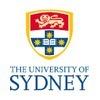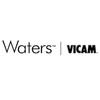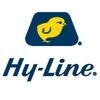Explore all the information on
Poultry management
Poultry management usually refers to the husbandry practices or production techniques that help to maximize the efficiency of production. Sound management practices are very essential to optimize production. Scientific poultry management aims at maximizing returns with minimum investment. A carefully controlled environment that avoids crowding, chilling, overheating, or frightening is almost universal in poultry farming. Cannibalism, which expresses itself as toe picking, feather picking, and tail picking, is controlled by debeaking at one day of age and by other management practices. The feeding, watering, egg gathering, and cleaning operations are highly mechanized. Birds are usually housed in wire cages with two or three animals per cage, depending on the species and breed, and three or four tiers of cages superposed to save space. Cages for egg-laying birds have been found to increase production, lower mortality, reduce cannibalism, lower feeding requirements, reduce diseases and parasites, improve culling, and reduce both space and labour requirements.
Mycotoxins are known to decrease health and performance in poultry production. Their modes of action, such as reducing protein synthesis and promoting oxidative stress and apoptosis, lead to cell destruction and lower cell replacement, affecting several organs and tissues. When different stress factors collude, such as high temperatures and humidity, poor ventilation, high stocking density, and management events, the effects of in-feed mycotoxins can reach a higher level, which may...
Comments : 1
Recommendations: 0
In the rearing aviary, day-old chicks must have easy access to feed and water. The environment should offer an optimal temperature, appropriate lighting, and good ventilation. These conditions ensure that the chicks grow well, and their fluff transforms into well-developed feathers. As the chicks...
Comments : 0
Recommendations: 0
I. INTRODUCTION Alternative rearing systems are becoming increasingly important mainly because of growing public concerns about intensive systems. Regulations have been established in some countries to restrict or ban the use of conventional systems. The European Union banned the use of conventional battery cage systems in 2012 and alternatively, new enriched colony cages, free range production systems or barn systems have been introduced as substitutes (Leinonen et al., 2014). As a...
Comments : 0
Recommendations: 0
Hens using the outdoor range display better plumage condition suggesting lower incidence of injurious feather pecking (Chielo et al. 2016; Rodriguez-Aurrekoetxea and Estevez 2016). However, ensuring that the majority of the flock utilizes the range has been difficult. Therefore strategies such as range enrichment are required to induce more birds to use the range and encourage natural behaviour. An uncontrolled observational study was conducted in South Australia on two commercial...
Comments : 0
Recommendations: 0
The environment in which a laying hen is reared can have long-term impacts on their behaviour, health and welfare later in life (Janczak and Riber, 2015). Alternative housing systems for layers provide access to larger areas and allow greater expression of behavioural repertoires, leading to positive acceptance by consumers. But the complexities of alternative systems can also place greater physical and behavioural demands on the birds, leading to increases in skeletal injuries or inter-bird...
Comments : 0
Recommendations: 0
The composition of gastrointestinal microbiota has been demonstrated to affect behaviour and vice versa (Neufeld et al., 2011; Berthoud, 2008). In free-range laying hens, the individual preference to range can lead to characteristic sub-populations of the flock (Hinch & Lee, 2011). The purpose of this study was to investigate the impact of ranging behaviour on caecal microbiota in laying hens. A flock of sixty ISA Brown laying hens was housed in the UNE research facilities with...
Comments : 0
Recommendations: 0
I. INTRODUCTION It has been shown that FP occurs in all housing systems, from conventional cages, to barn and free range systems (Green et al., 2000). However, there is a lack of data available on the true prevalence of FP in commercial free-range layer farms in Australia. In a survey in the UK, 65% of flocks showed FP during lay as reported by free-range farmers but, when the same flocks were assessed by researchers, prevalence reached 89% and 69% at 25 weeks, and 73% and 86% at 40...
Comments : 0
Recommendations: 0
I. INTRODUCTION Australia is highly urbanized, with 80% of people living in the major cities (Australian Government Department of Infrastructure and Regional Development, 2015) and, although Australians believe that farmers do a good job of looking after their animals (Cockfield & Botterill, 2012), there are low levels of agricultural knowledge among the general public (Worsley et al., 2015). Egg production has become increasingly prominent in public discussions of farm animal...
Comments : 0
Recommendations: 0
The UGA International Poultry Short Course provides a comprehensive overview of modern poultry production.
It is intended for those individuals with limited knowledge of poultry, as well as those who might have considerable experience in one area of poultry production but would like to have a better...
Comments : 0
Recommendations: 0
by Benjamin Geist
With just over 120 days until APSS 2026, planning for the 37th annual Australian Poultry Science Symposium is progressing smoothly. Next year’s event will return to the University of Sydney Business School – Belinda Hutchinson Building (H70) on the Camperdown Campus, and we’re excited to once again welcome delegates for 2.5 days of presentations, posters, networking, and industry engagement.
The theme for APSS 2026...
Comments : 0
Recommendations: 0
Footpad dermatitis (FPD) is considered an animal welfare issue. Wet and sticky litter are major causes of FPD (Taira et al., 2014). Our previous study showed that a well selected probiotic strain Bacillus subtilis 29784 can improve broiler performance by modulating intestinal microbiota and intestinal inflammatory status (Ghane et al., 2017; Jacquier et al., 2016). We hypothesize that the previous demonstrated benefits of B. subtilis 29784 on gut health will improve litter quality and may...
Comments : 0
Recommendations: 0
There is an increasing trend of raising backyard poultry in urban and suburban settings across Australia, with Australian Egg Corporation Ltd. reporting backyard chicken coops accounting for almost 12 per cent of the nation's total egg production and 393 million eggs produced in metropolitan and regional gardens. However, there is no national or state legislation/policy in place currently for backyard poultry keeping and the issue is managed by local governments at a council level who...
Comments : 0
Recommendations: 0
In commercial egg production, production traits such as bodyweight (BW), feed intake and efficiency, and egg quality are targets that are critical to profitability. Assessment of average BW and uniformity are relatively straightforward measurements. Furthermore, it is well known that achieving target BW for the breed standard and minimising BW variation are key to producing greater egg mass and egg quality. It is more difficult to get an understanding of the variation in feed intake, egg...
Comments : 0
Recommendations: 0
Jose J. Bruzual (Senior Poultry Veterinarian, Aviagen) comments on the benefits of this grading method and its relevance to the poultry industry in this Engormix interview. ...
Comments : 1
Recommendations: 1
1. Introduction In conventional poultry farming, the risk of transmission of infectious diseases, increased by, e.g., high stocking density, low genetic variation, suboptimal ventilation, and immunosuppression, represents a serious challenge for birds’ health and welfare [1,2]. Against this background, biosecurity represents one of the most powerful instruments to mitigate the risk of introduction (external biosecurity) and subsequent spread (internal biosecurity) of...
Comments : 0
Recommendations: 0
1. Introduction Welfare assessment in animals has increasingly emphasized the need for objective, non-invasive measures that reliably reflect physiological and psychological states [1–4]. In this context, pupillometry (the measurement of pupil dynamics) has gained traction as a valuable tool, particularly in human psychological and neurological research [5,6]. The pupil’s diameter is known to change in response to a variety of internal and external stimuli, including...
Comments : 0
Recommendations: 0


A Natural Choice for Growth Enhancement in Farm Animals - 3 ESSDENDIS
Suggested link
An observational study conducted on three commercial layer farms showed that environmental enrichment increases number of birds on the range (see Dekoning et al. in this APSS Proceedings). In the same study, we aimed to determine if plumage damage score is different between birds found inside versus outside sheds. The farms were stocked with HyLine Brown flocks (all beak-trimmed); Farm-1 & Farm-3 had one shed each and Farm-2 had two sheds (all 3 farms & four flocks with a fixed...
Comments : 0
Recommendations: 0
Feather pecking is synonymous with economic and major welfare problems in the poultry industry and is positively associated with feather ingestion. In a choice-feeding experiment, laying hens showed a stronger preference for unwashed compared to washed feathers (McKeegan and Savory, 2001). The attraction toward unwashed feathers could be related to the preen oil produced by the uropygial glands located dorsally at the base of the tail. Preen oil covers the feathers during the process of...
Comments : 0
Recommendations: 0
Beak trimming can have serious consequences on hen welfare, health and production. However, compared to hot blade trimming, the infra-red technique has resulted in more uniform beak length and symmetry (Dennis et al., 2009). Pecking stones (Analysed Values: 20.50% calcium, 4.30% phosphorus, 5.0% sodium and 2.50% magnesium) have been used in Europe and are reported to blunt hens’ beaks and alter pecking behaviour (Glatz and Runge, 2017). The objective of the current study was to...
Comments : 0
Recommendations: 0
In recent years, in response to consumer concerns regarding welfare of birds, there has been a move from caged to free-range production systems. This change has resulted in increased exposure of hens to pathogens, including parasites, which can compromise the welfare of the animal (Wongrak et al., 2015). Amongst helminths, Ascaridia galli is the most abundant nematode in poultry, and can cause significant economic losses and negative impacts on bird health and welfare (Daş et al.,...
Comments : 0
Recommendations: 0






.jpg&w=3840&q=75)












.jpg&w=3840&q=75)








